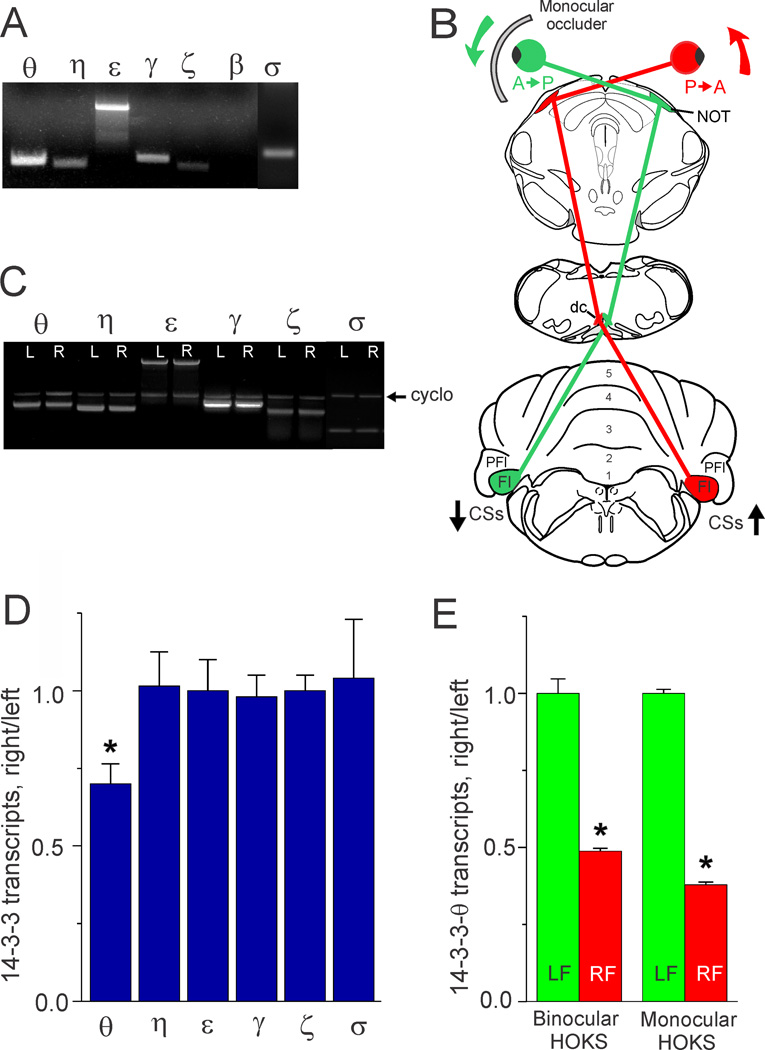Figure 1. Detection of 14-3-3 protein isoform transcripts in mouse flocculus and decreased transcription of 14-3-3-θ mRNA evoked by increased climbing fiber activity.
A. In three mice we surveyed the mouse flocculus for seven 14-3-3 isoform mRNAs (θ, η, ε, γ, ζ, β and σ) using PCR. All seven isoforms were detected except β. B. We used HOKS to control climbing fiber activity. The cartoon shows that HOKS of the right eye in the P→A direction increased climbing fiber activity projecting to Purkinje cells in the right flocculus. HOKS of the left eye in the A→P direction decreases climbing fiber activity projecting to the left flocculus. Placement of a contact occluder in front of the left eye effectively created a monocular HOKS condition in which only the right eye was stimulated. C. In three mice we extracted mRNA from the left and right flocculi following 24 h of HOKS and analyzed these samples for transcription of six different 14-3-3 isoforms (θ, η, ε, γ, ζ and σ). The optical density of PCR bands was measured and normalized with respect to cyclophilin (cyclo). Density is expressed as a ratio of mRNA transcripts (right/left flocculus). The transcription of 14-3-3-θ, but not η, ε, γ, ζ, β and σ was reduced by increased climbing fiber input evoked HOKS in the right flocculus. D. The data obtained from the PCR bands in C are plotted in a histogram and show that 14-3-3-θ, but not η, ε, γ, ζ, β and σ transcripts were reduced during HOKS (ANOVA, p< 0.04, indicated by asterisk). E. In six mice we tested the efficacy of binocular vs monocular HOKS in evoking changes in 14-3-3-θ transcription. Each group of three mice received either binocular or monocular HOKS for 24 h. We detected 14-3-3-θ transcripts using real-time PCR. All transcripts were normalized with respect to β-actin. Monocular HOKS proved equally effective as binocular HOKS in evoking a relative decrease in 14-3-3-θ transcripts in the right flocculus (increased climbing fiber activity) (ANOVA, p< 0 .001, indicated by asterisk). Error bars indicate standard error of the mean. Abbreviations: CSs, complex spikes; dc, dorsal cap; Fl, flocculus; NOT, nucleus of the optic tract; PFl, paraflocculus.

